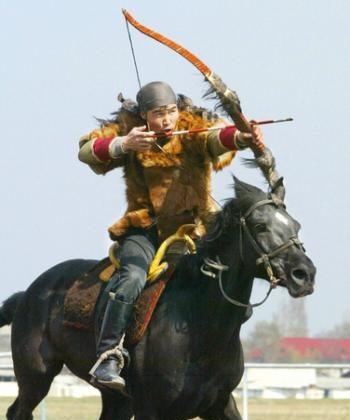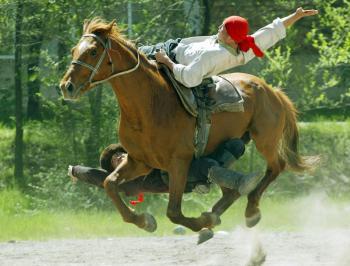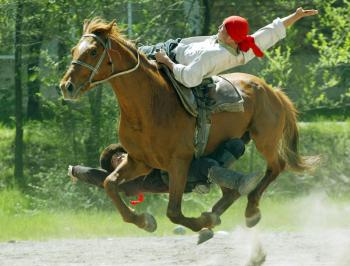The men of the Kirghiz are expert horsemen and fearless masters on horseback. Kirghistan, located in the heart of Asia, along the ancient Silk Route, sits between the Pamir and Altai regions, amid the Tianshan Mountain Range. The landscape is picturesque with 7,000 meter high snow-capped mountains, lakes and high steppes.
Nomads have criss-crossed this region for thousands of years, encountering cultures of all kinds. The area today features people from 28 different nationalities, most of whom earn a living by animal husbandry and farming, with the Kirghiz people constituting 60 percent of the population.
They belong to the Turkic people and are one of the oldest of the Central Asian cultures. The name kirghiz means “the people,” and the suffix “stan” stands for “land.”
Masters on Horseback
Horses have been bred by the people of this area for 3,000 years, resulting in a type of animal well suited to the harsh conditions of nomadic life. The Kirghiz horses’ small stature enables it to maneuver well on narrow mountain paths. The owners take pride in their animals and treat them with love and respect. Horse breeding represents the people’s heritage and is an expression of their spiritual and economic existence. As with the Mongols, the Kirghiz nomads are true masters in riding. Children learn to ride bareback when quite young, even before they can mount by themselves.
Forced Onto a Reservation
More than 70 years of Communist rule have left deep scars in the landscape and in the people’s culture. During an era of ruthless collectivization, many of the nomads were compelled to settle and remain in a certain area. And the diminutive Kirghiz horse underwent a change: during Soviet rule, many of the Kirghiz horses were subjected to cross-breeding with Russian horses, to produce horsemeat for human consumption. Oppressed and defiant, many Kirghiz people opted to kill their beloved animals rather than exchange them for a dozen Soviet chickens. Some horses were hidden in the Tianshan Mountains.
Following the collapse of the Soviet system, Kirghistan became an independent republic in 1991. With the toppling of the Marx and Lenin monuments, the collective farms were abolished and their lands distributed among the farmers. A process of transformation set in. This is a huge task for the Kirghiz people—to restructure a “planned economy” into a market economy. Recalling their heritage and rekindling ancient nomadic traditions—almost lost for several generations under Communist rule, helps them to reclaim their identity. The Soviet system was never quite able to deny the Kirghiz their love of horses. The animals play a vital role in the people’s daily lives. Even today, the horse is their most important means of transportation.
The Wild Horseback Riding Games
Horseback fighting games are part of millennia-old Kirghiz traditions. One of these is a race called At-tshabysh where youngsters between the ages of 13 and 15 show how well they have mastered horse racing. This competition shows the Kirghiz horse’s best features.
One of the old horse games is called Kok boru, meaning “gray wolf”. It comes from the era when the cattle would pasture in the steppes and mountains. The herd was in danger of constant attack from wolves. The shepherd [on horseback] would chase the wolves with poles and whips, in order to rescue the sheep. The Soviets had banned this practice, but it was still carried out secretly in several villages. These days, the re-enactment takes place with a decapitated goat as the prop. High in the saddle, the wild riders demonstrate their strength, skill and speed. With tremendous ruthlessness, the riders grab the dead goat from one another. The team gaining the most points from the opposing side in a given time frame is awarded the dead goat as the prize, to be roasted and eaten. The Kirghiz are fond of eating meat.
They have given notice - to rediscover their cultural identity, and are doing so with pride and great dignity.
Read the original German article






Friends Read Free